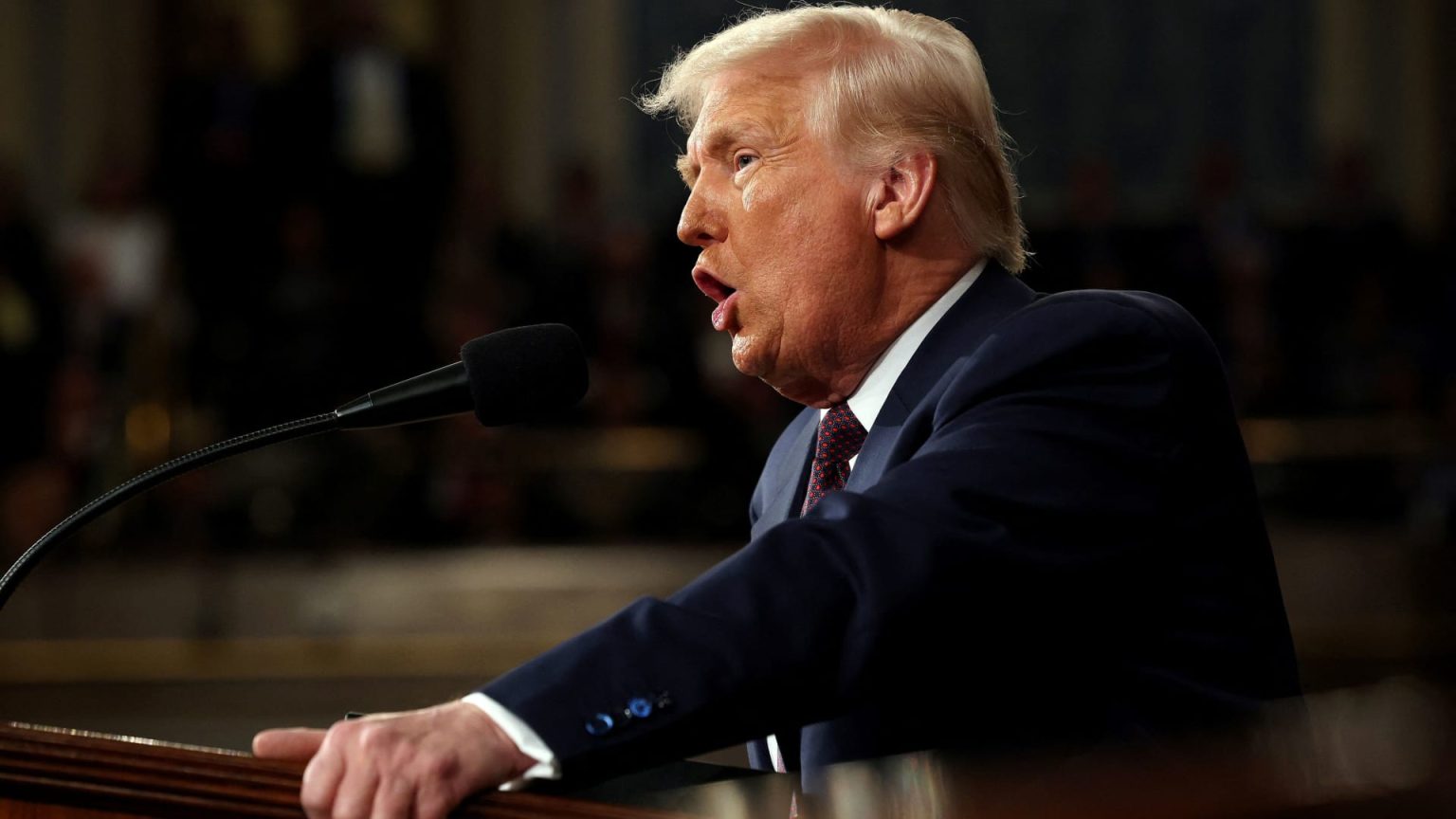On Tuesday night, President Donald Trump delivered a highly anticipated address to a joint session of Congress, amid ongoing stock market volatility attributed to his new tariffs on imports from Canada, Mexico, and China. This follows a controversial clash with Ukrainian President Volodymyr Zelenskyy over U.S. military assistance to Ukraine. During the speech, Trump emphasized the theme of “the renewal of the American dream” and touted his administration’s policies while facing vocal opposition from Democratic lawmakers.
| Article Subheadings |
|---|
| 1) Overview of Trump’s Address |
| 2) Content Highlights |
| 3) Reactions and Interruptions |
| 4) Guests and Their Significance |
| 5) Context and Democratic Response |
Overview of Trump’s Address
President Donald Trump addressed the nation during a contentious joint session of Congress on Tuesday night, seeking to reaffirm his administration’s commitment to reviving the American economy amid recent stock market instability due to his newly imposed tariffs. These tariffs, which include a 25% tax on goods from Canada and Mexico and 20% on Chinese imports, have spurred debate regarding their potential impact on economic growth and consumer prices. Trump’s speech, viewed as a pivotal moment in his presidency, was framed around the theme of “the renewal of the American dream,” spotlighting his intentions and policies going forward.
Content Highlights
During his address, President Trump declared a significant commitment towards improving the economic landscape of the nation. He claimed that his administration had “accomplished more in 43 days than most administrations accomplish in 4 years or 8 years.” With a focus on job creation and economic recovery, the President emphasized his desire to provide “dramatic and immediate relief to working families” by tackling inflation head-on. He derisively pointed at former President Joe Biden for soaring egg prices, saying, “Let’s be clear, we won’t let this crisis continue.” His astringent remarks signal a broader election strategy, positioning himself against the previous administration.
Reactions and Interruptions
The speech, however, was not without its disruptions. Early in his remarks, Rep. Al Green, a Democrat from Texas, heckled the President, leading to his ejection from the House chamber. The incident underscored the current polarized atmosphere within U.S. politics, as Democrats displayed signs proclaiming messages like “Save Medicaid” and “Musk Steals.” Such interruptions reflected the deep-seated divisions over Trump’s policies, particularly his approach to healthcare and immigration, which he touted during the address.
Guests and Their Significance
A noteworthy aspect of the annual address is the guest list, often curated to emphasize themes of the night. Among those invited by the President was Marc Fogel, a schoolteacher recently released from a Russian prison, and the family of Corey Comperatore, who was tragically killed during an assassination attempt on Trump last year. In contrast, the Democratic guest list included military veterans and civilians affected by the ongoing cuts to federal employment, mirroring the party’s response to be more inclusive of voices impacted by government decisions.
Context and Democratic Response
Tuesday marked Trump’s return to address Congress, with his last address occurring on February 4, 2020, during the final State of the Union address of his first term. Following a bitterly contested period that saw Trump acquitted in his first impeachment trial, the atmosphere remains charged. Sen. Elissa Slotkin of Michigan is anticipated to deliver the Democratic response, aiming to counteract the President’s narratives. The ongoing tension within Congress highlights the challenges facing Trump as he heads into the next electoral cycle, navigating between his administration’s policies and the persistent opposition from Democrats.
| No. | Key Points |
|---|---|
| 1 | Trump emphasized his administration’s achievements in the first 43 days, aiming to project confidence in economic recovery. |
| 2 | The President’s tariffs on imports are a contentious point, creating uncertainty in the stock market and among consumers. |
| 3 | Democratic lawmakers displayed signs of protest during the address, reflecting ongoing tensions regarding healthcare and economic policies. |
| 4 | Guest lists serve to highlight the differing priorities between the Republican and Democratic parties during such events. |
| 5 | Historical context is significant, as Trump returns to Congress after previously contentious relations, especially surrounding impeachment. |
Summary
President Trump’s latest address to Congress aimed to rejuvenate his image and underscore his commitment to economic revitalization amid turbulent times. By framing his achievements and calling for bipartisan cooperation, Trump seeks to solidify his position as a strong leader. However, the persistent objections from the opposition reveal the deep divides in American politics, challenging any straightforward path to unity or consensus in the near future.
Frequently Asked Questions
Question: What was the main theme of Trump’s address?
The main theme of Trump’s address was “the renewal of the American dream,” which he used to frame his administration’s economic goals and achievements.
Question: What were the repercussions of Trump’s tariffs?
Trump’s tariffs on imports from Canada, Mexico, and China have been contentious, leading to debate over their impact on the economy and inflation, particularly in consumer goods.
Question: How did Democrats react to Trump’s speech?
Democrats reacted with visible protest, holding signs criticizing Trump’s policies, highlighting opposition to reductions in Medicaid and workforce cuts associated with Musk’s initiatives.


